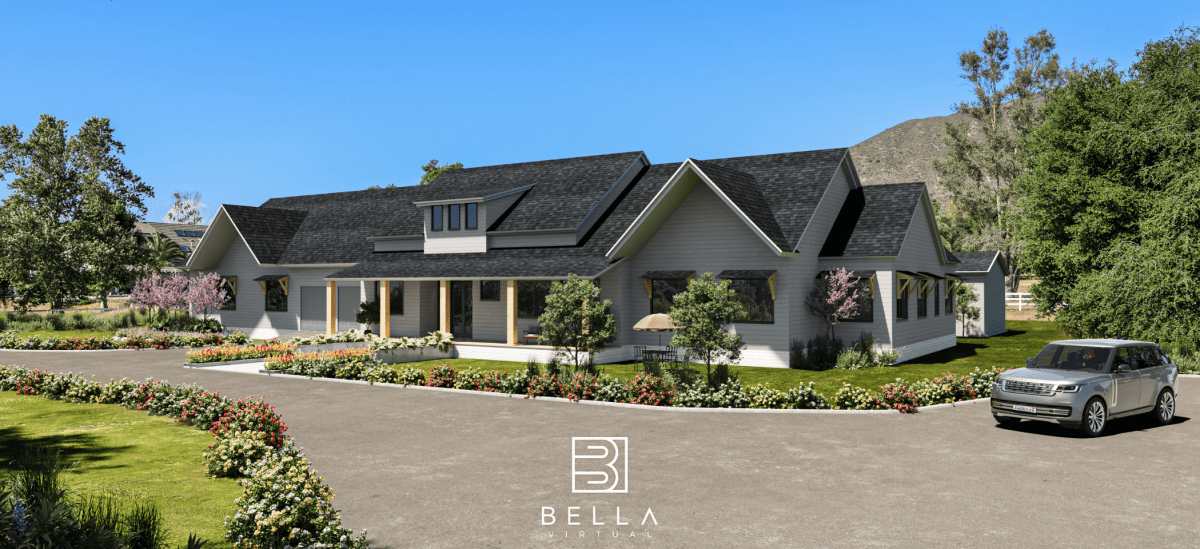Introduction
In today’s competitive architecture, engineering, and construction (AEC) market, 3D visualization has become more than a design tool—it is a strategic asset. High-fidelity architectural renderings allow stakeholders to experience a project before it is built, bridging the gap between vision and reality. Studies from 2023 to 2025 show that Building Information Modeling (BIM) and advanced 3D rendering technologies reduce design errors by up to 30%, cut project timelines by 20%, and lower costs by as much as 38% compared to traditional methods. These numbers illustrate the transformative role of 3D visualization in reducing risks, improving collaboration, and accelerating approvals. Whether used for residential developments, commercial spaces, or large-scale urban planning, 3D visualization drives efficiency, boosts client confidence, and enhances marketing impact.

The Role of 3D Visualization in Modern Architecture
From Concept to Reality: How 3D Visualization Transforms Design Communication
One of the greatest challenges in architecture is translating technical plans into a format that clients can easily understand. While 2D blueprints offer precision, they often fail to convey scale, texture, lighting, and spatial relationships in a way that resonates with non-technical audiences. This is where 3D architectural renderings excel. They create immersive, photorealistic environments that mirror the final build, enabling clients to visualize every detail—from material finishes to natural light flow.
These renderings offer a true-to-life representation of the final product, much like the results from our Virtual Staging service, which showcases properties with a high level of realism. By allowing stakeholders to “walk through” a design before construction starts, architects minimize misunderstandings, reduce costly revisions, and keep projects on track.
The Rise of BIM and Photorealistic Rendering in Architectural Workflows
Over the past decade, BIM and 3D visualization have become indispensable in the architectural process. BIM integrates every aspect of a building’s design, enabling architects, engineers, and contractors to work from a unified model. According to a 2025 study in the Journal of Built Environment, BIM adoption leads to a 25% reduction in Requests for Information (RFIs), a 30% decrease in design errors, and significantly fewer change orders.
When paired with photorealistic rendering, BIM allows teams to test materials, adjust layouts, and assess environmental performance in real-time. From conceptual massing models to marketing-ready visuals, these technologies streamline design development, enhance collaboration, and ensure alignment between all project stakeholders.

Key Benefits of 3D Architectural Renderings
Time and Cost Savings Backed by Industry Data
Time efficiency is one of the most compelling advantages of 3D visualization. Firms using 3D visualization and BIM report average project time savings of 20% compared to traditional methods. This acceleration comes from faster design iterations, early clash detection, and reduced on-site problem-solving.
Cost savings are equally significant. By detecting design flaws early, minimizing rework, and optimizing material usage, 3D visualization reduces project costs by 15% to 38%. In addition, buildings designed with integrated energy modeling are, on average, 25% more energy efficient, resulting in long-term operational savings. For example, a commercial office project in San Francisco used 3D modeling to streamline mechanical system layouts, saving both construction costs and future maintenance expenses.
Enhancing Stakeholder Communication and Decision-Making
Clear communication is the foundation of successful architectural projects. 3D renderings remove the guesswork, giving clients a precise understanding of spatial arrangements, material choices, and overall aesthetics. This transparency speeds up decision-making and fosters trust.
For renovation and restoration projects, 3D visualization can recreate existing structures, similar to how our Virtual Renovation & Staging service helps clients envision transformations. Municipal planning boards, for instance, can better evaluate proposals when presented with realistic 3D models, reducing approval delays and increasing community support.
YOU MAY ALSO LIKE:
- Exploring the Latest Trends in 3D Architectural Visualization
- Farm House Virtual Staging: Furniture Removal and Staging
- Why Bella Staging is the Best Virtual Staging Company

Applications Across Sectors
Residential, Commercial, and Urban Planning Case Studies
The versatility of 3D visualization extends across residential, commercial, and urban planning projects. In residential development, photorealistic renderings give prospective buyers the ability to explore properties pre-construction, increasing sales velocity and perceived value.
Our Residential 3D Rendering service, for example, helps homeowners and developers see the full potential of a property before a single brick is laid. A Washington State residential project leveraged 3D renderings to sell 20% faster, increasing the final sale price by $300,000.
In the commercial space, a developer used immersive VR tours for a Class A office complex, securing multiple tenant commitments before groundbreaking. Urban planning agencies use large-scale 3D visualizations to simulate transportation flows, environmental impact, and public space utilization—helping stakeholders make informed, future-proof decisions.

Integrating VR and AR for Immersive Architectural Experiences
Virtual Reality (VR) and Augmented Reality (AR) are expanding the boundaries of architectural visualization. By integrating with BIM and real-time rendering engines, VR allows clients to “walk” through their future spaces at full scale, while AR overlays digital models onto real-world environments via mobile devices or headsets.
The benefits go beyond aesthetics. VR and AR enhance remote collaboration, allowing distributed teams to review designs simultaneously. Safety training simulations in VR can identify potential hazards before construction begins, while AR enables on-site defect detection and real-time adjustments. These immersive tools not only improve project accuracy but also strengthen marketing impact, enabling clients to connect emotionally with a space before it exists.
FAQ
-
What software is used for 3D architectural visualization?
Common tools include Autodesk Revit, SketchUp, 3ds Max, Lumion, and Unreal Engine, often paired with BIM platforms.
-
How much does 3D rendering cost for residential projects?
Costs vary widely based on complexity, but residential 3D renderings typically range from a few hundred to several thousand dollars per project.
-
How long does it take to create a 3D rendering?
Simple renderings may take 1–3 days, while complex, highly detailed scenes can require 1–2 weeks or more.
-
What is the difference between BIM and 3D rendering?
BIM is a collaborative process integrating all aspects of a building’s lifecycle into one model, while 3D rendering focuses on producing realistic visual representations for design validation and marketing.
-
Can 3D visualization improve sustainability in architecture?
Yes, integrated energy modeling in 3D design can enhance efficiency, reducing energy use by up to 25% and optimizing building performance.

Conclusion
The power of 3D visualization in architectural renderings lies in its ability to unite design precision with visual clarity. Backed by hard data—such as 20% faster project completion and cost reductions up to 38%—it is clear that these tools are no longer optional but essential in modern architecture. From streamlining approvals to boosting property sales, 3D visualization transforms how architects, developers, and clients collaborate.
Ready to bring your vision to life? Bella Virtual’s expert team offers Virtual Staging, Residential 3D Rendering, and Virtual Renovation & Staging to help you impress clients, win approvals, and market properties faster. Contact Us today to get started.














